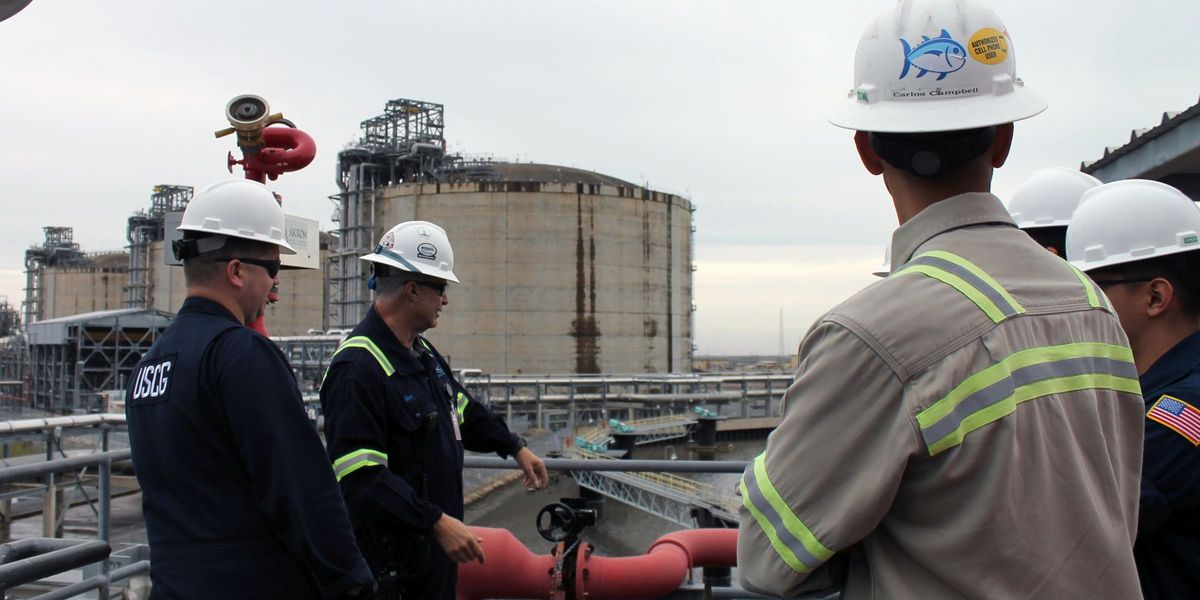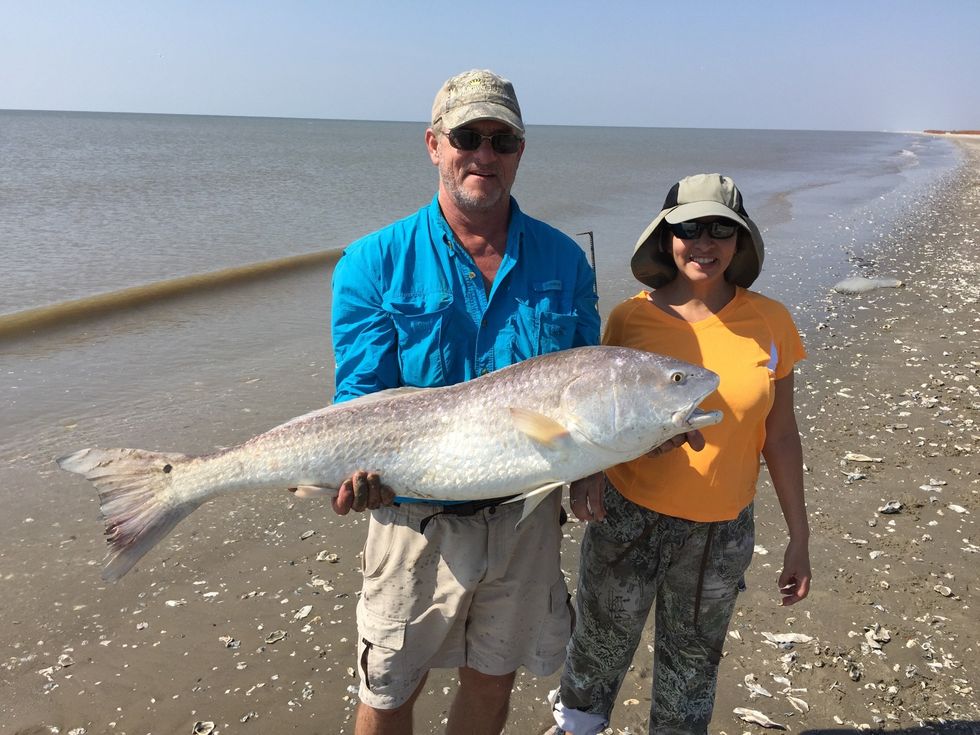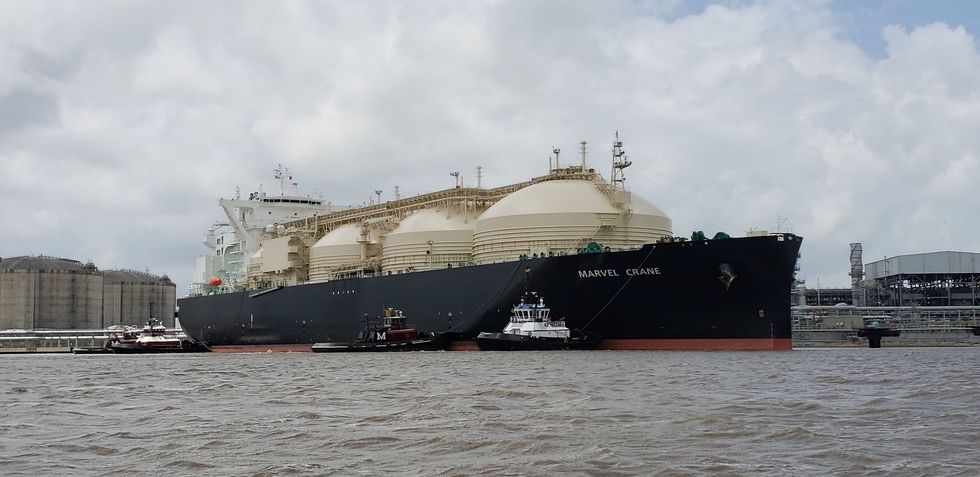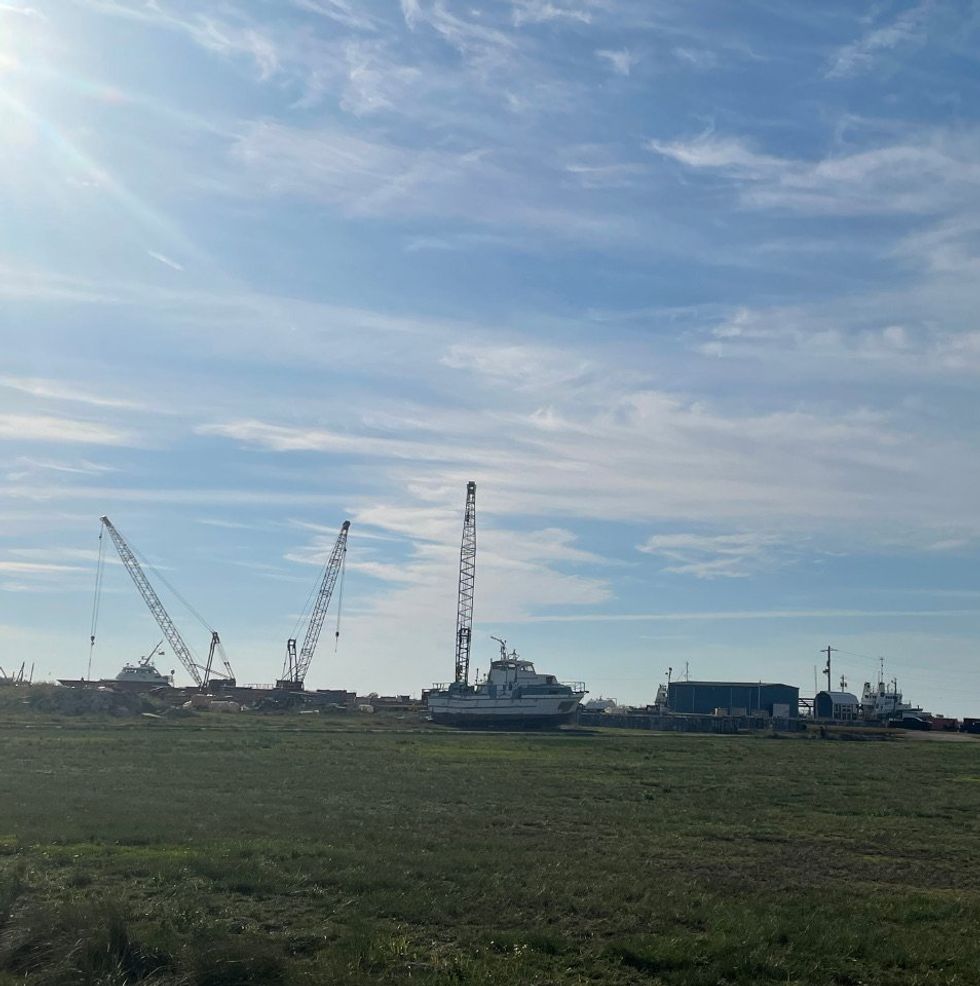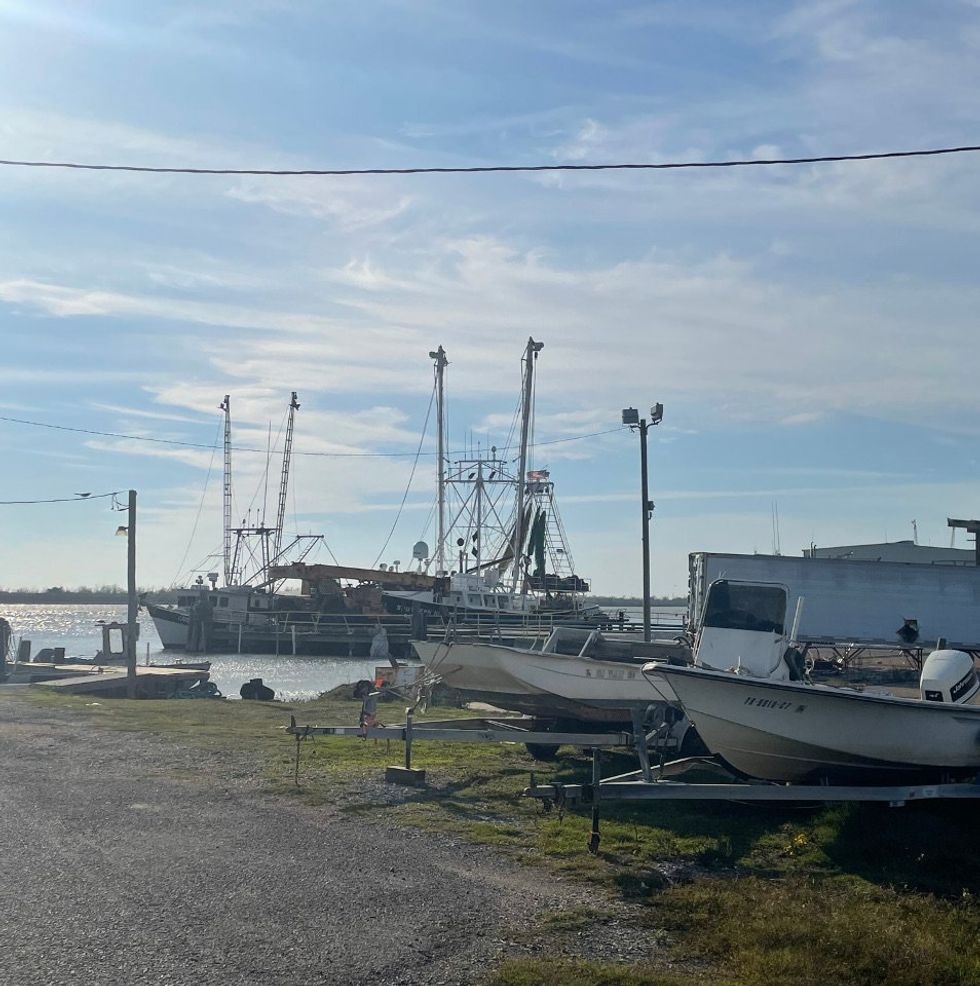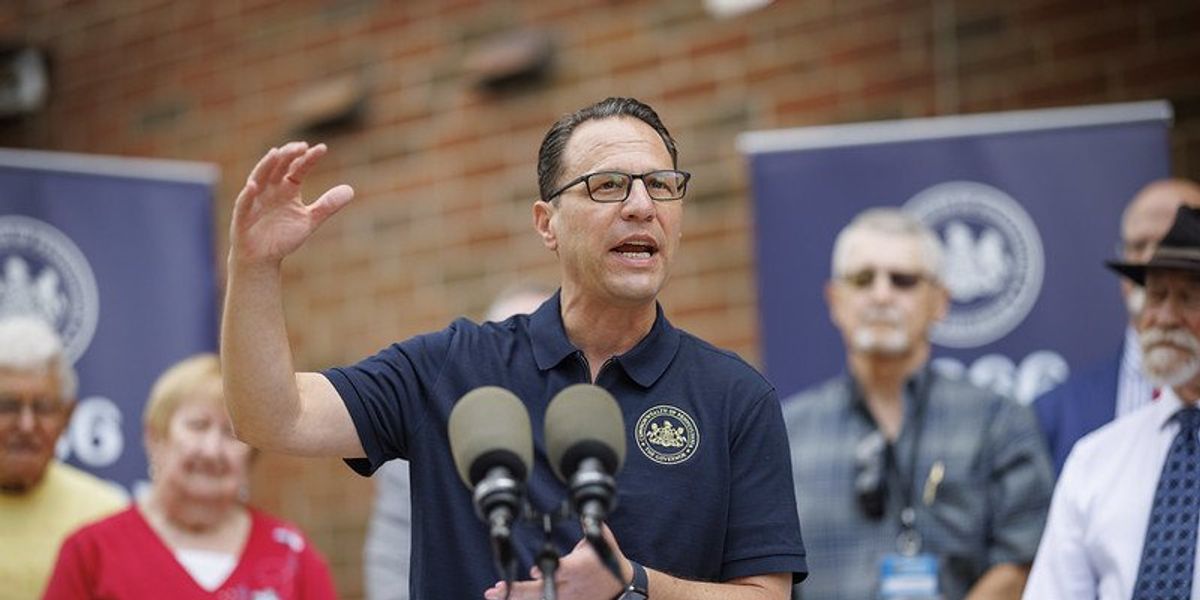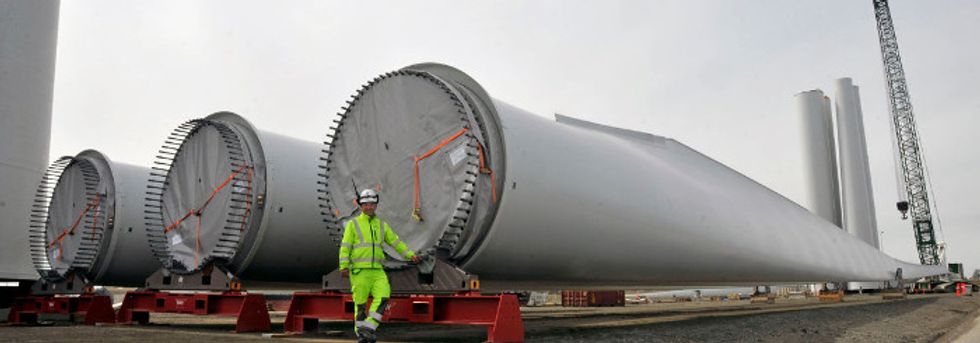
Made in America: Trump embracing offshore wind?
Without officially saying so, the Trump administration is deciding that the windmills can be made here after all.
In March, the Interior Department auctioned off 122,405 acres of water off Kitty Hawk, North Carolina, to the Spanish-based Avangrid for $9 million. Avangrid, a division of Iberdrola, beat out three competitors, including Norway’s Statoil and Germany wind farm developer wpd offshore Alpha.
Interior Secretary Ryan Zinke hailed the auction, affirming that offshore wind is "one tool in the all-of-the-above energy toolbox that will help power America with domestic energy, securing energy independence, and bolstering the economy. This is a big win.”
That followed the equally stunning announcement a week prior by Interior’s Bureau of Ocean Energy Management that it plans to stage another competitive lease auction in 400,000 acres of New England waters, triggered by unsolicited applications for the same area by Statoil and the U.S. wing of Germany’s PNE Wind.
The parcels are adjacent or near areas off Massachusetts and Rhode Island already leased by Denmark’s DONG Energy, Germany’s OffshoreMW and Rhode Island’s Deepwater Wind.
Those two developments signal that the Trump administration takes the economic potential of offshore wind energy far more seriously than might be assumed from the president’s past disparagement of wind turbines. Trump told the New York Times shortly after his election, “We don't make the windmills in the United States. They're made in Germany and Japan."
Already big business in US
But it may have dawned on the Trump administration that offshore wind is actually much more an American industry than most people realize.
In 2015, Boston-based General Electric made the biggest purchase in its history, acquiring the French energy infrastructure giant Alstom for $10.6 billion. The deal included Alstom’s offshore wind turbine manufacturing operations, including a plant in Saint Nazaire, France, that made the five turbines spinning in the U.S.’s first offshore wind farm, the 30-megawatt Deepwater Wind Block Island project.
GE proceeded last year to purchase the world’s largest turbine blade manufacturer, Danish-based LM Wind, for $1.65 billion. Last month, the LM Wind division announced it is building a blade manufacturing plant in the Normandy region of France, providing at least 550 direct and 2,000 indirect jobs as that nation ramps up its offshore industry. The factory will be capable of making the longest turbine blade in the world, nearly 300 feet long, for new-generation 8 MW turbines.
Besides GE, New York-based Blackstone, one of the world’s top investment firms, was behind the 2011 funding of Germany’s 80-turbine, 288-MW Meerwind offshore wind farm. Blackstone, with the help of Bank of America Merrill Lynch, last year sold its 80 percent stake to Chinese investors.
It may have dawned on the Trump administration that offshore wind is actually much more an American industry than most people realize.
New York-based Goldman Sachs also has a 7 percent stake in DONG, the first company to cross the 1,000-turbine mark. Europe has a total of 3,600 turbines spinning, providing 12.6 Gigawatts of power, enough for 13 million homes, according to industry advocate Wind Europe.
Critical mass close
It is clear that the offshore wind industry now wants to cross the water, with rocket-sized components that are too long and too massive to economically import long term from Europe. If it does, it could easily blow to our shores the skilled local construction and technical jobs and large-scale manufacturing President Trump has promised.
Deepwater Wind was recently cleared to begin a 15-turbine project off Montauk, Long Island, in waters where Deepwater could eventually construct up to 200 turbines. In December, Statoil won the federal lease for a 79,000-acre area of ocean off Long Island’s Jones Beach for a record $42.5 million.
Besides the competition in North Carolina, Maryland is in the approval stage of offshore wind proposals. And with Massachusetts now mandating 1,600 MW of offshore wind in its energy portfolio by 2027 and with New York Governor Andrew Cuomo pushing for 2,400 MW of offshore wind by 2030, the U.S. is about to become part of "the brightest spot in the global clean energy investment picture," as Bloomberg New Energy Finance put it.
Job engine, port revivals
The inspiration points in Europe are endless. Last year saw a record $26 billion of investments, as the industry is on track to double the 12.6 GW by 2020.
The United Kingdom has approved construction of the largest wind farm yet, the 174-turbine, 1.2 GW Hornsea One Array. DONG says it expects Hornsea to generate 2,000 jobs during the construction phase and 300 operational jobs thereafter.
DONG and the British government have begun planning a second wind Hornsea wind farm that would be even bigger, 300 turbines and 1.8 GW, adding another 2,000 construction and nearly 600 maintenance jobs.
In Germany, the offshore wind industry is responsible for nearly halving unemployment in Bremerhaven and Cuxhaven, towns northwest of Hamburg, were hit hard in the late 20th century by the decline of fishing, shipbuilding and the closing of US military facilities. Local officials likened Bremerhaven to Detroit for its 25-percent unemployment rate.
In Germany, the offshore wind industry is responsible for nearly halving unemployment in Bremerhaven and Cuxhaven.
Today, with a downtown core gleaming with new museums and hotels, those same officials call offshore wind their regional "moon shot." Up in Cuxhaven, Siemens is putting the finishing touches on a giant turbine plant that should go into operation in the middle of this year, bringing yet 1,000 more jobs to the region, adding to the 20,000 jobs claimed by the German offshore wind industry.
Denmark, despite having only the population of Massachusetts, remains a per-capita titan in offshore employment with 10,000 jobs. The UK, which has 41 percent of Europe’s installed capacity, had at least 30,000 direct and indirect jobs, according to UK Renewables and is obviously adding thousands more with oncoming projects such as Hornsea.
In December, Siemens completed a $381 million turbine-blade plant in Hull that will employ 1,000 people when fully operational.
Unlike much of modern manufacturing, The Guardian’s story on the plant’s opening noted: "Surprisingly, the manufacturing process is almost entirely done by hand, rather than robots. The workforce includes former supermarket workers, aerospace industry experts on second careers and builders who learned fiberglass skills locally from fitting bathrooms and making caravan parts."
And Hull and other British port towns, according to newspaper features, are experiencing rebounds akin to Bremerhaven and Cuxhaven. A January Sunday Express story recalled how Hull declined from the overfishing of cod into a "rundown backwater" that topped the list of worst places in the UK to live in 2003. With redevelopment strategies that included the investment of offshore companies like Siemens, the city has rebounded to be a popular tourist destination.
Grimsby, a 33-mile drive from Hull, already has 1,500 offshore wind jobs and, with the planned Hornsea projects, has plans to grow and become the biggest offshore wind industry cluster in the world. DONG said in 2015 it plans to invest $7.4 billion in the Grimsby/Hull region by 2019.
Elsewhere in the UK, another massive offshore wind project, the 102-turbine, 714 MW East Anglia One, promises 3,000 jobs.
The American potential
The building of house-sized nacelles and football-field-length blades, the manufacture and laying of miles of underwater cables, the building of jack-up installation barges and maintenance vessels, the welding of foundations and towers, port rehabilitation and all the nuts and bolts in between should rise from its current 75,000 jobs to between 170,000 and 204,000 jobs, according to Wind Europe.
A recent New York Times feature on the industry said, "Offshore wind, once a fringe investment, with limited scope and reliant on government subsidies, is moving into the mainstream."
According a joint report last September by the Department of the Interior and the Department of Energy, a robust U.S. offshore wind industry could employ up to 34,000 workers by 2020, up to 80,000 by 2030 and up to 181,000 by 2050.
The industry would be making $440 million in annual lease payments and $680 million in annual property tax payments for local economies. Better still, a University of Delaware study last year calculated that just 2 GW of projects in the pipeline in Massachusetts waters would ignite such an efficient local industry supply chain that the price of offshore wind energy should be even with other energy options by 2030.
"At that point, the technology presumably could continue to compete on its own without any continuing legislation," the study said.
Onshore bipartisan success
The onshore wind industry is now at such cost parity that it is booming across America, from liberal California to the conservative Great Plains and Texas. In fact, 80 percent of U.S. wind farms are in Republican congressional districts, according to the American Wind Energy Association.
Wind energy surpassed hydroelectric power in generating capacity for the first time last year.
According to AWEA, the U.S. counterpart to Wind Europe, there are now more than 500 blade and turbine factories and supply-chain manufacturing facilities making the 8,000 different parts that go into one machine.
Domestic wind industry jobs have crossed the 100,000 mark and the Bureau of Labor Statistics lists wind service technician as the fastest-growing job through 2024, with a current median pay of $51,050.
Wind service technicians are a huge reminder that this is an industry where many jobs are skilled working-class crafts that can be learned in technical colleges, providing a fresh employment pathway for individuals, families and low-income communities where 4-year college is often seen as unaffordable.
Despite his planned sweeping rollbacks of environmental regulations he decries as "job killing," offshore wind offers exactly the kinds of jobs President Trump has said he would bring back to areas of America where other forms of manufacturing have disappeared.
The Perry Factor?
Another reason for optimism for offshore wind during the Trump administration is that Secretary of Energy Rick Perry oversaw Texas becoming the nation’s leader in onshore wind when he was governor.
Today, 12,000 turbines provide 13 percent of the state’s electricity, powering 4 million homes, and providing more than 24,000 jobs, according to AWEA.
The state’s transmission grid completed a $7 billion upgrade to accommodate wind. As governor, Perry boasted that Texas as a nation would rank sixth in the world in onshore wind installed capacity.
Late in his administration, he began to invest in offshore. In 2014, his Texas Emerging Technology Fund awarded $2.2 million to Texas A&M; University to explore offshore wind. That grant was matched with $64 million of federal and industry research investments.
When Mr. Perry was confirmed as Energy Secretary, AWEA CEO Tom Kiernan said, "The Texas success story with wind power has now become a model for America ... we look forward to working with him at the Department of Energy to keep this success story going."
The first signs are that the success story will include offshore wind, spinning with jobs, and revitalizing towns dimmed with decline.
Without officially saying so, the Trump administration is deciding that the windmills can be made here after all.



